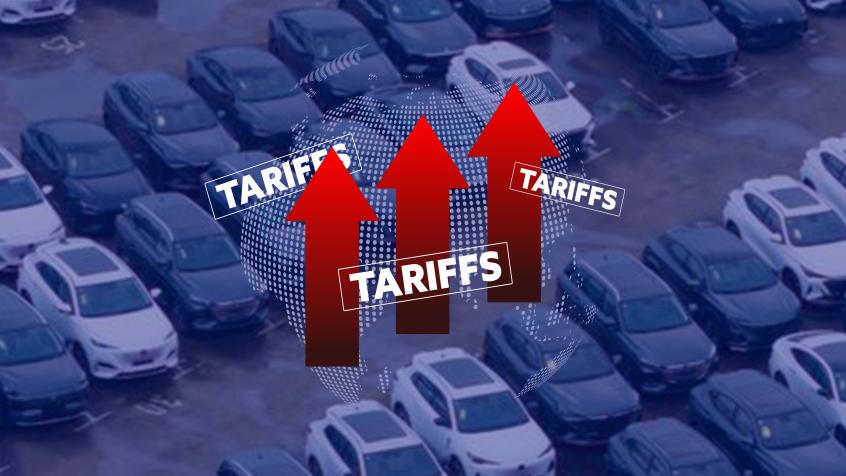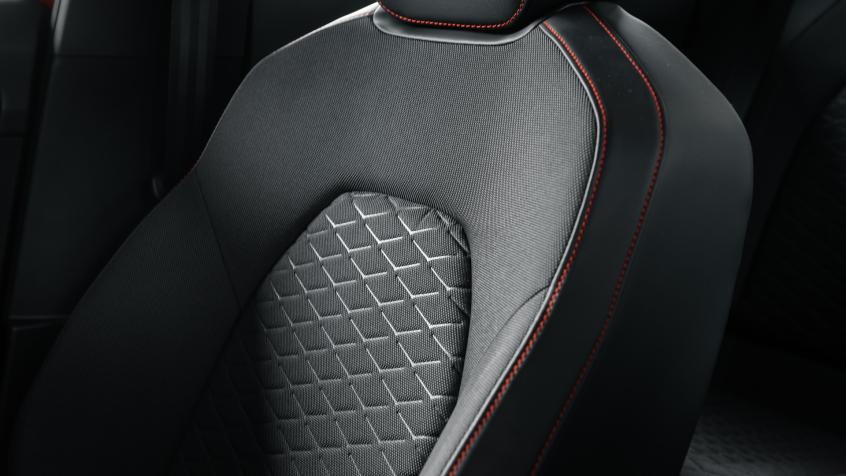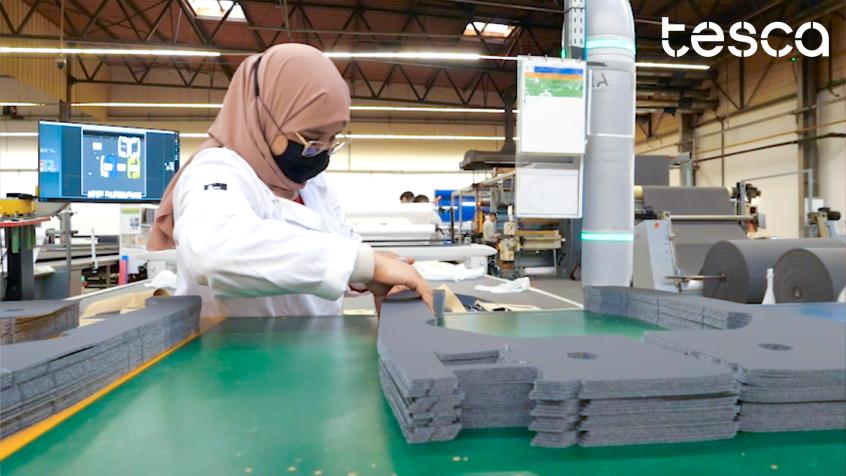Going green in the automotive cutting room: 6 best practices
Why we need to future-proof the world ?

“Rather than supporting structures of the past...
...we must use these resources now wisely to invest into our common future. Third, the areas that I see most fruitful in this respect are : sustainability, digitalization and innovation.” - President Werner Hoyer at the Frankfurt Finance Summit, European Investment Bank.
In March 2020, almost the entire world went on lockdown in an attempt to flatten the COVID-19 curve, which has dramatically affected the automotive industry. In addition to the much talked about demand and supply shocks that they have experienced, the pandemic has made consumer behavior more unpredictable, with rising unemployment, market uncertainty and companies implementing new telecommuting policies. The pandemic has hit the reset button on the economy where the consumer’s hierarchy of values and needs has been toppled. While some experts say that this crisis will bring about a decline in car ownership, others think that new business opportunities might arise because of it, such as increased demand for small, affordable, and ‘low maintenance’ cars. However, while tastes and preferences are shifting, environmental sustainability remains to be an issue that both consumers and automotive companies are grappling with.
The crisis has shed light on how individual actions affect the lives of others. The fact that pollution indexes have decreased dramatically during the lockdown has demonstrated how damaging human and business activities can be to the environment. Price-sensitive consumers who are looking for private transport are now feeling the need to “future-proof”, playing their part in preventing future environmental disasters and pandemics from happening, and voting for socially responsible companies with their dollar. This presents OEMs and Tier 1 vehicle interior manufacturing companies the perfect opportunity to reorient their value chains towards improving sustainability standards, which in turn will help their customers satisfy these urgent consumer needs. Even before COVID-19, environmental sustainability has already been the number one priority for many automotive companies. According to an article by Capgemini’s research group, there has been a 56% spike in the number of sustainability-related events in the auto industry from 2015 to 2019. Moreover, companies have been facing pressure from governments across the world; as automotive production in UK alone takes up 5.2 billion liters of water and produces 1 million tons of carbon dioxide. From January to June 2017, developing countries received 3.1 million tons of plastic waste from the US, Europe and Japan. This ongoing pandemic can only serve as an impetus for vehicle interior companies to intensify their efforts in reducing waste and pollution.
6 best cutting room practices to improve environmental sustainability and productivity
Why production engineers can make a difference
Perhaps another reason why automotive companies have been slow in implementing eco-friendly measures is its cost – there has been a preconceived notion that sustainability is expensive, and it’s an initiative that can only be undertaken by big, international companies with impressive budgets. Here’s where manufacturing engineers can play a major role today. They have the power to reverse that assumption and help their companies become more sustainable, as they have real insight into their daily production processes. They are often the ones bringing together the production line, checking the efficiency of daily operations, minimizing costs and eliminating waste. Responsible for equipment implementation and maintenance, they work closely with operators. They can show that in fact, by investing in the right cutting equipment, analyzing the right data and focusing on achieving a select few objectives, improving sustainability can in fact, lead to an increase in cost and material savings, and reduce their total cost of ownership as well.
Here are six ways how you can improve environmental sustainability and productivity in the cutting room:
1 - Cut with zero buffer to minimize fabric waste
You need best-in-class equipment that cuts with zero buffer. Well-designed blades and built-in smart maintenance, and management systems and sensors can facilitate zero-buffer cutting and minimize fabric waste. Keep a lookout for features such as stress sensors for more precise line adjustment, new conveyors to eliminate small inaccuracies, embedded cameras in the cutting head, adjustable cutting parameters and speed, fine and rigid connected blades that don’t bend while cutting, and pilot software that can detect and adjust common lines. They make zero-buffer cutting possible.
Why is this important? In the cutting room, things add up. The more material you save, the less money and energy you need to spend on fabric and waste management. Reducing your buffer by a mere 1 mm will improve your fabric yield by 1%. If you currently have a fabric yield of 77% with 3mm-buffer cutting, just imagine - with zero buffer, it will drastically increase by 80%. As a result, your waste will decrease from 23% to 20% in terms of total material surface, which diminishes your overall waste by 15%. Additionally, with less fabric waste to manage, you will incur less internal logistic, storage, labor and supplier costs. The cheapest way to minimize waste is by preventing it.
2 - Reduce errors, scrap rate, and rework
Errors are costly in terms of fabric waste, time and money. Unrecycled fabric scraps usually end up in landfills. A high scrap rate is usually caused by four main factors: low quality raw materials, equipment, poor operating practices, and cumbersome production setup processes. Firstly, it is important to provide your cutting room personnel with easy-to-use machinery that has high-quality blades to increase precision especially when it comes to high-ply cutting. The thinner and stronger your blade is, the more accurate the cutting gets. For example, a 1.5x6.5mm blade will guarantee clean, cutting quality free of defects even for high plies of fabric.
Knowledge-sharing has been cited as a problem between generations of manufacturing engineers and within their teams of operators that could contribute to a high scrap rate. Improving the training process via quick wins and a step-by-step method will help your operators gain confidence and ample knowledge to use the machines with ease. Having a system to store data on your last cutting jobs can help you transfer knowledge to new staff. When it comes to mistakes, singling out the operator might not be the right approach – everyone has a role to play. Examining your past failed products together as a team is necessary to improve your current processes. Having a connected dashboard or a platform can help all team members access centralized data and analyze past cutter performances, establish KPIs to identify and eliminate roadblocks.
Avoid errors caused by equipment breakdown and dysfunction by increasing machine availability. Ensure that your cutting machines come with extended hours of remote technical support, built-in preventive and predictive maintenance systems, and carry out regular cycles of checkups and preventive maintenance.
3 - Discard fewer consumables and spare parts
The longer your consumables and spare parts last, the less wasteful it is to produce vehicle interiors. It is important to invest in consumables and spare parts that are made out of sturdy and biodegradable material. For example, a 30-hour gain in maintenance (by changing your consumables every 1,000 hours instead of 500) can lead to 7% increase in cost savings. By changing your spare parts within longer time frames, there will be less machine stoppage and disruption, and hence, fewer errors and failed products made. A 100% increase in the lifespan of a blade and its sharpening bands, and 40% increase in a bristle block’s lifespan can lead to an 8.5-hour gain in productivity.
4 - Lower your power consumption
The vehicle production process requires large amounts of water, energy and resources and so for automakers, every bit of effort in improving sustainability counts. In the fabric cutting room, you can use low power consumption technology that is energy-efficient for your processes. The fabric cutting solutions you use should also comply with global safety and environmental regulations, ensuring that you meet industry standards. Installing automatic energy-saving consumables, permanent bristle block cleaners and an auto-restart function for power failures help minimize electricity usage.
5 - Increase labor and productive efficiency by gaining visibility into your processes
Sustainability is all about using the same amount of resources more efficiently and leaving nothing to waste. Increasing efficiency of your processes is a way of improving it, and this entails having detailed, actionable insights into what each cutting room team member is doing, identifying and clearing roadblocks and non-value added tasks. In this case, having a digital dashboard can be particularly useful. By owning a centralized platform that is connected to your cutters where you can store, receive and share all data from different cutting sites and processes, you can gain visibility into all your cutting processes, set your KPIs, and identify areas of improvement. You can also see how your plant is performing as compared to the rest of the industry.
Use your dashboard to keep track of machine time breakdown, net cutting time, production performances, machine use, production quantities to get the full picture of which resources you have not been optimizing enough to continuously improve your processes and eliminate waste. According to a research article by Universiti Teknikal Malaysia Melaka, using OEE metrics does help in improving environmental sustainability, “The net effect of reduction in machine downtime, escalation productivity of labors, and minimization of defects is the ability to achieve higher production levels with the same amount of resources.”
6 - Adhere to ISO 14001 standards
In order to obtain the 14001 certification, automotive companies have to continuously track and reduce their energy consumption, greenhouse gas emissions, and establish objectives for waste reduction and a waste management priority system that includes ‘prevention, reduction, reuse, recovery, recycling, removal and finally ,disposal’. Vehicle interior manufacturers can help their customers contribute to this global effort by using automated cutting equipment that enables them to meet these targets. They can thereby set a precedent for their customers, competitors and suppliers, and eventually the entire automotive industry.
Embracing sustainability in your everyday operations is in a way, investing in the future. By implementing these six best practices with the help of Industry 4.0-compliant cutting equipment, production engineers will be able to help their companies become more eco-friendly, and most importantly, ready for the future.
Related Content







